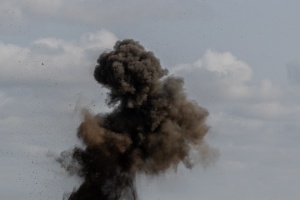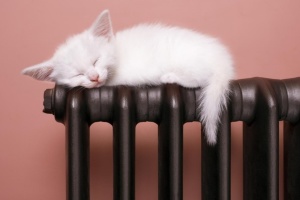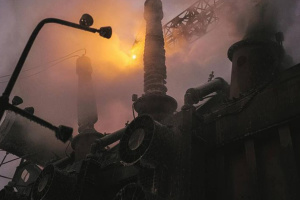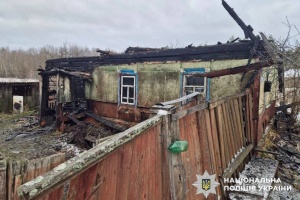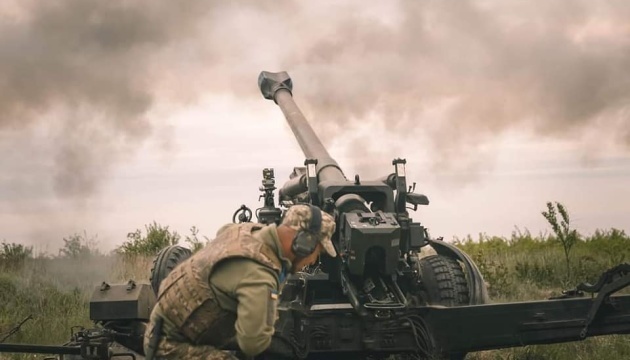
Hellish August: Will the battle of Ukraine’s South become decisive?
In August, the moods in both Ukraine and the Russian Federation are significantly different from those prevailing over the past five months of the ongoing war. The same applies to military developments, as well as the games in the international arena. Tensions have increased, and the challenges that were previously considered only "probable" or "hypothetical" have come to afore.
Russia's war against Ukraine and the entire civilized world caused “depressurization” of global space, and things previously deemed impossible became too close to reality, including a threat of a continental disaster caused by the destruction of a nuclear facility; China's war against Taiwan with uncertain consequences for the whole world; a new war in the unbalanced Balkans between Serbia and Kosovo; a new war in the Caucasus between Azerbaijan and Armenia over Nagorno-Karabakh; and major escalation of the long-lasting military conflict between Israel and Palestine. But there are still plenty of things unseen to the naked eye that could suddenly explode. It may seem strange, but the vast majority of these events are precisely a result of the adventurous and irresponsible actions of Putin's Kremlin.
At the same time, hopes for victory, precisely the "Ukrainian version" of it, which involves the liberation of the occupied territories – have also increased. And there are decent grounds behind these expectations, too.
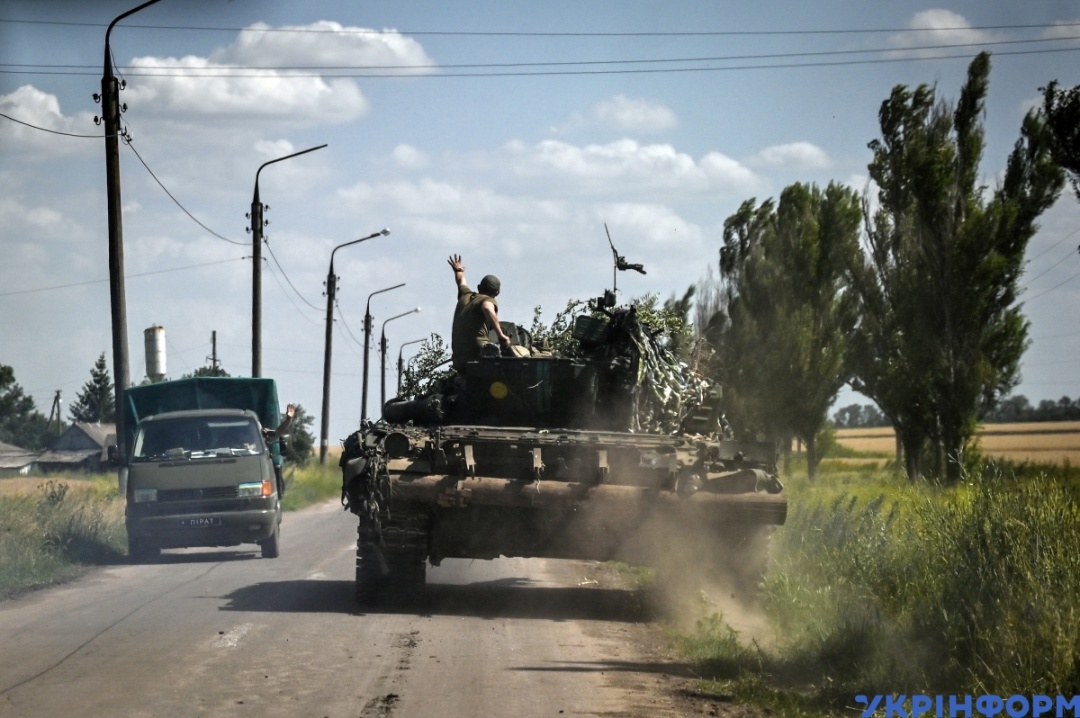
Ukraine's victory is no illusion
It was in August that it became quite clear that Ukraine's victory was not an illusion at all. The West seems to have fully realized this as well. For example, on August 13, The New York Times columnists wrote that as more and more weapons continue to flow into Ukraine, the country has imperceptibly changed the strategy of the war against Russia and is already preparing to reverse its course. Commander-in-Chief of the Armed Forces of Ukraine, Valeriy Zaluzhnyi reported on August 14 that Ukrainian defenders eliminated a fifth of the Russian occupation forces. Meanwhile, active hostilities are ongoing along a 1,300 km-long front line.
Ukraine’s acclaimed General Dmytro Marchenko, after the Ukrainian Army attacked a Russian airbase at the Saky airfield on the occupied Crimean peninsula, vowed a quick liberation of Kherson, a city in the south of mainland Ukraine, adding that it will take place quite. The general also stressed that Crimea would be liberated by military means, including with the destruction of the bridge across the Kerch Strait (the so-called “Crimean Bridge), in order to prevent the Russians from replenishing their forces. Of course, the most important here is the psychological aspect of the statement, which further deepens the existing shock that the Kremlin schemers have been experiencing lately. But it’s not only that. The thing is, the statement is backed by real successes on the battlefield.
Despite President Volodymyr Zelensky recognizing in his address to the nation on the 160th day of the war with Russia that "we cannot yet completely tackle Russian army’s superiority in artillery and manpower," a series of drastic shifts observed in August should well be taken into account. Thus, the Russian troops have not yet abandoned their offensive attempts in certain areas, while Ukraine’s defense forces are yet to fully stop the invaders in their tracks and properly prepare a counteroffensive. But the arguments claiming this could all be done before summer-end are already being voiced.
That’s not least due to some bright episodes of this month. Indeed, the massive strike at the Saky military airfield, which is considered one of Russia’s key aviation bases in the temporarily occupied Crimea, caused more than just explosions destroying Russian warplanes – it also exploded in the minds of the Russians. And that’s not only because the scale of aircraft loss at the 43rd Fighter Aviation Regiment of the Russian Aerospace Forces may turn out to be the largest for Russia since World War 2, as CNN has learned. In particular, seven Russian warplanes were destroyed as a result of several hits. Two more aircraft were likely damaged, which is confirmed by satellite imagery. Other sources, citing images provided by private companies, indicate that Russian forces lost between nine and 27 aircraft, suggesting that the 43rd Regiment has since become incapacitated. At the same time, reports also appeared of 160 casualties, including 60 dead – pilots and ground service personnel. So it’s about destroying Russia’s plans for further operations of their Air Force. But this isn’t even the most important part because, in the end, for a country boasting more than 1,500 combat aircraft, losing of a dozen or two is unlikely to affect its military potential. Another highlight of the event is that the Ukrainian Armed Forces have effectively destroyed an enemy military airfield at a critical distance of up to 230 km. This was actually the first strike at the operational-tactical range, and it was this fact that caused panic among the leadership of the occupying forces. The current moods just can’t be hidden: thousands of terrified Russian tourists are fleeing Crimea chaotically against the background of an apparent paralysis of the regime's propagandists in Moscow.
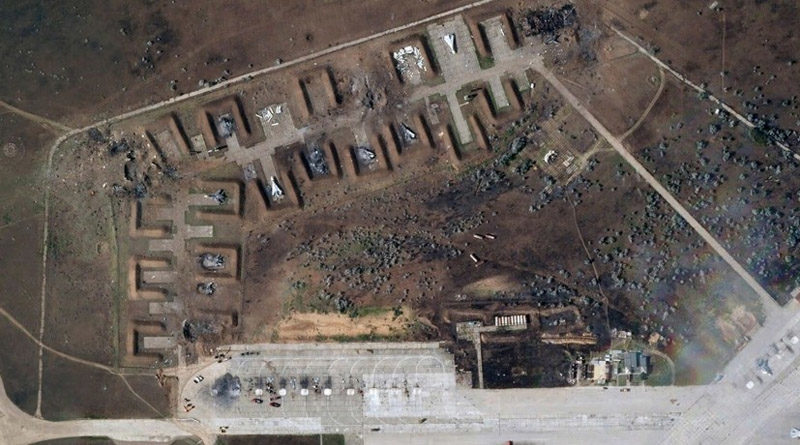
A lively discussion about what weapons exactly hit the air base also contributed to raising panic in Russia. At the same time, the more anonymous reports the Western media published, claiming that it was either some Ukrainian weapon or a stunt by the country’s Special Operations Forces, the more confident the Russians became in their belief that it was ATACM operational-tactical missiles for HIMARS launchers, received by the Armed Forces of Ukraine. As is known, various versions of these missiles operate at ranges from 165 to 300 km. Besides, U.S. Congress expressed bipartisan support for handing such missiles to Ukraine after the audacious act of terror committed by the Russians in Olenivka, where the captured Mariupol defenders were treacherously and brutally killed in a poorly fabricated false flag operation. Some experts suggest that it was possible to neutralize Russian air defense systems thanks to the hi-end AGM-88 HARM anti-radar missiles, designed to destroy radars used to lock Russian air defense systems on their targets. Moreover, it was precisely on the day of the Ukrainian strike on the Russian airbase in occupied Crimea that the Pentagon officially announced the transfer of such missiles to the Armed Forces. On the other hand, there were no reports confirming that Russian air defense systems were destroyed in the area, so in fact the things may have been much simpler: the seemingly easy hit was due to traditional Russian self-assuredness and chauvinism, that is, they never bothered to ensure proper airspace control over the site as they might have completely ruled out a scenario involving a Ukrainian strike. By and large, it is not so important how the air base was destroyed. What is important, however, is that after the attack, Putin's Kremlin should have realized that the Ukrainian Army will pursue its mission of destroying the invasion forces, receive more powerful weapons, and become even more effective in repelling the occupation of their land.
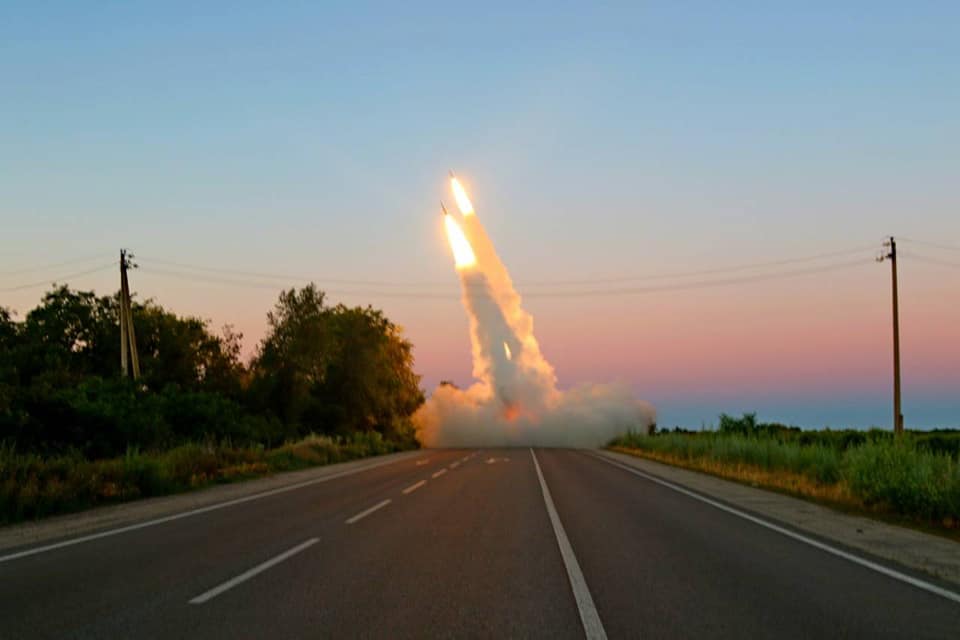
This almost revolutionary event took place against the background of the approval of a new U.S. assistance security and technical assistance package. On August 8 came the report that the $1 billion package includes expensive and extremely powerful munitions for HIMARS (and M270) MLR systems. But the Russian invaders were probably even more impressed by the fact Ukraine will also receive anti-aircraft missiles for NASAMS, modern anti-aircraft missile systems with an average range of 20 to 40 km, depending on the type of missile used. Soon after the aid package was announced, the Ukrainian Air Force Command said it expected to receive two batteries of American-Norwegian NASAMS air defense systems within just a few days, and that preparations for their handover are already underway. The relevant decision was adopted by Norway’s government, which means that one of the NATO Allies will share the latest air defense systems (currently eight countries, including Norway have such systems in service with their armed forces: the Netherlands, Finland, Spain, Lithuania, Australia , Chile, and Indonesia). NASAMS are capable of effectively destroying ballistic missiles on approach to targets. Moreover, if the Armed Forces receive NASAMS-3, they will also be able to shoot down maneuvering ballistic targets.
In addition, in August, British Defense Minister Ben Wallace said Britain was doubling the number of M-270 multiple rocket launchers sent to Ukraine; in addition to the three already delivered units, three more will be transferred. Germany has finally handed over a batch of Gepard self-propelled anti-aircraft systems, whose twin 35 mm guns allow shoot down air targets at a range of up to 4 km.
Naturally, none of these developments offer the Kremlin any reasons for optimism.
Meanwhile, Ukraine focused on building up capacities to launch a counteroffensive in the southern parts of the country. The City of Kherson is of a huge political, strategic, and psychological significance. First, it is the most important and populated center captured by Russian invaders since the large-scale invasion in 2022. Secondly, Kherson is connected to the Russian-occupied Crimean peninsula by a strategic railway branch, which has a major influence on the invaders’ ability to replenish material and technical reserves from the south. Severing this link would be a powerful prerequisite for the elimination of the land corridor from the occupied parts of Donbas to Crimea that the Russians managed to create in the course of the 2022 war. Finally, Kherson region was captured quite quickly, and not only due to the lack of properly trained territorial defense forces, system of engineering facilities and minefields. Last but not least – this was a result of successful efforts on the part of Russian intelligence assets and a certain number of traitors among Ukrainians. Therefore, regaining control of Kherson would also have an extraordinary psychological significance. In the event that the Ukrainian Armed Forces gain a strategic advantage in Kherson region, the Ukrainian Army will able to create the prerequisites for an overall victory. And this is in no way an exaggeration – if only the Western partners are consistent and able to further pace up and extend arms supplies to Ukraine and strengthen Russia sanctions.
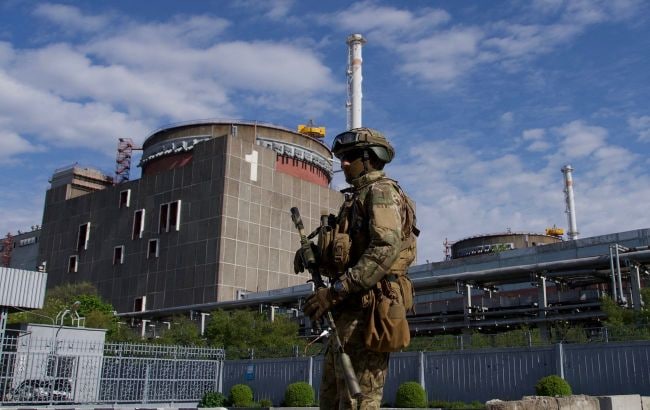
Anxiety fever in the enemy camp
It seems that a real anxiety fever has been raging in the enemy camp throughout August. According to multiple media reports, on August 8, the chief of Russia’s radiation, chemical and biological defense forces, Major General Valery Vasiliev, who at that time commanded the garrison stationed at the captured Zaporizhia NPP, vowed readiness to blow up the facility that the Russians have already mined. "This will be either Russian land or a scorched desert," Vasilyev said in an eerie threat. Thus, through one of his terrorist minions, Vladimir Putin, a planetary-level thug, voiced his yet another blackmail addressing Western leaders of. The goal of the forever-KGB-lieutenant-colonel is easy to grasp: he demands a full halt to Western arms supplies to Ukraine. But, it seems, he went a bit too deep into playing games a bit too dangerous. The world has likely begun to realize that Osama Bin Laden was just a street gangster compared to Putin. That’s because Putin's nuclear terrorism around ZNPP poses a threat to the entire continent, given the scale of the disaster that the Kremlin chief is plotting.
And yet, the main thing about this message is the fact that Putin did start to feel feverish. He obviously saw quite clearly the harbingers of his own disaster, so his personal anxiety was reflected in the worrisome statements, intentions, and actions of his subordinates. At the same time, both Putin and his entourage remain stubbornly silent about the Ukrainian strike on their air base in Crimea because any public recognition of Ukraine's success would immediately reveal the weakness of military command, as well as the total failure of the eastern strategy pursued by the Kremlin and the blood-thirsty dictator himself. At the same time, a certain indirect evidence of problems mounting in the Russian Federation and their perception by Russia’s military and political leadership was the sacking of the Russian Black Fleet Commander, Igor Osipov. Isn't it telling that after the sinking by the Ukrainian Navy of the Moskva Cruiser, the Russian Navy flagship, Admiral Osipov remained in office, but it was the attacks on the air base, where, as per Russia’s defense officials, no casualties were reported, that resulted in the admiral’s immediate dismissal?
By the way, it is no less interesting that in Russia, about 30-40% of generals and other top officers who took part in the planning of the so-called "special military operation" in Ukraine have since been removed from their positions and subjected to investigation.
In fact, the Russian occupying forces, most likely, will not dare to hold on September 11 sham "referendums" on the annexation of the Ukrainian territories captured in 2022. At least, their propaganda mouthpieces are totally silent on the issue since August-start. Obviously, this is due to insecurity over to the massive strikes that the Ukrainian Army delivered and the need to focus on defending the seized territories. The situation has become too dangerous for holding show-off carnivals and trumpeting pompous lies. On the other hand, having behind their back a motley history of occupation of foreign lands, the Russian Federation has built a whole package of mechanisms for the subjugation of peoples, which they are most likely to apply. In addition to the deportation and separation of families with the criminal abduction of children, the occupiers also actively used forcible naturalization and spread the ruble zone. Among their latest "methods" is the so-called "filtration", which gives nightmares to the civilian population of the captured settlements.
The occupiers began to use another, special type of torture - the “occupation” of the Ukrainian Internet space. It is about redirecting data from mobile and Internet networks in occupied cities to Russian ones. As a result, access to Facebook, Instagram, and Twitter has been blocked, while any access to Ukrainian news sites or any independent sources of information has been cut off. In this way, residents of the occupied territories are forced to consume content produced by Russian platforms, which is pure propaganda against the background of a vacuum of truth. Such restrictions, according to the occupiers’ idea, should reshape people’s minds or at least influence them and force people to live by social rules traditional for Russia, which is rapidly degrading.
The peak of this terrible Russian disease was perhaps a rather revealing episode in early August. It is about Putin’s vocal supporter, film director Nikita Mikhalkov, who openly praised the Russian top recidivist for unleashing a war on Ukraine. It is clear that this shameful act is aimed at offering mental support for Putin personally, but also, among other things, it is an undeniable indicator of the level of fear prevailing in the Kremlin, of which Mikhalkov, of course, is well aware. Besides, it is an indicator of comprehensive degradation of Russian society.
Meanwhile, in the first decade of August, a well-known Russian arms expert openly acknowledged the technological backwardness of the invasion forces. Chief of the Center for the Analysis of Strategies and Technologies (CAST) Ruslan Pukhov reported on the extremely low combat cpabilities of the Russian army, suggesting that "by the end of the summer, the situation on the front lines may turn dramatic."
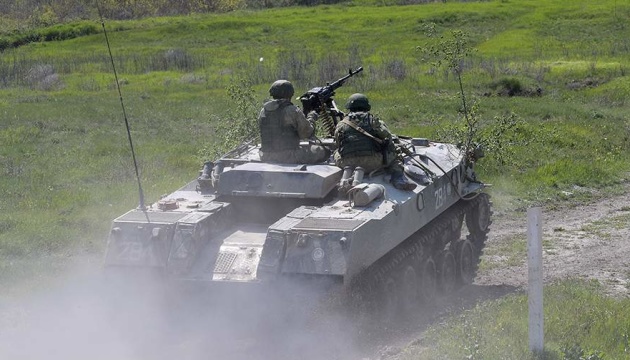
In addition, the head of the Moscow-based CAST referred to Ukrainians as "brilliant soldiers" who "learn very quickly." Speaking about the Russian airborne assault troops, Pukhov noted that "now the airborne troops, roughly speaking, are poor ersatz infantry." The expert recognized Russia's categorical lag in artillery and expressed his belief that during an artillery duel, Ukrainian systems would defeat Russian ones. But the most extraordinary part of the expert's report was him recognizing the lack of Russian dominance in the Ukrainian airspace.
Along with the tectonic shifts in the Russian armed forces, weird things started happening in the circles of developers of those "state-of-the-art" weapons that Moscow has always flaunted. Thus, arrests have begun in the high treason case targeting their hypersonic missile developers. In early August, the third scientist involved in the project was arrested – the chief of the Institute of Theoretical and Applied Mechanics, Oleksandr Shilyuk. The first one to be nabbed, according to TASS, was Doctor of Physical and Mathematical Sciences at the Novosibirsk State University, Dmitry Kolker, while the second suspect is Professor of the Institute of Theoretical and Applied Mechanics, Anatoliy Maslov, 75. In early July, the first detainee, Dmytro Kolker, died in the ICU of one of the Moscow hospitals) .
So, along with its poorly prepared army, as it turned out to be, the whole of Russia began to suffocate.

When will the war end?
The Russo-Ukrainian war, in case it drags on, will lead to a whole series of crises. Most of them, including humanitarian disasters in Mariupol and other captured cities, famine in multiple regions across the globe, millions of refugees, energy crisis in Europe, were deliberately designed by the Kremlin in order to gain trump cards for talks. Some related to the escalation of military conflicts arose as a logical consequence of Putin's aggression. All this made the world think: perhaps it would it be better and easier for the planet to get rid of yet another tyrant than to expose itself to immeasurable danger.
On August 11, little brave Latvia declared Russia a sponsor of terrorism. The country’s Seimas adopted a resolution on Russia's targeted military attacks on the civilian population of Ukraine and public space, in which Russia's violence against the civilian population was recognized as terrorism, and Russia – as a state sponsor of terrorism. The statement also emphasized the immoral and illegitimate nature of the tactics chosen by Russia, which widely used particularly brutal, indiscriminate weapons that maim their targets, causing extreme suffering. If Latvia’s position caused a chain reaction in other countries, a countdown would start for Putin according to the laws of human justice. Much depends on the U.S., where the Senate late July already adopted a resolution with a call to recognize the Russian Federation as a sponsor of terrorism for its aggression toward Ukraine, Georgia, and Chechnya, as well as a huge death toll it brought along. Why is this necessary? That’s because it will create the effect of global condemnation of the country’s top leadership, which has recklessly put humanity on the verge of a global catastrophe, driven by their destructive chauvinist-fascist desires. After such a decision is passed by a couple of dozen countries of the civilized world, no one will call Putin anymore.
What is the Kremlin hoping for now?
The China factor only works half-way – wherever China's confrontation with the U.S. is concerned. On August 11, China called the United States the "main culprit" of Russia's war in Ukraine – for supplying weapons to Ukrainian defenders. But this still doesn’t mean that China has completely sided with the Russian Federation. Beijing is ready to support Moscow toward weakening Washington's position, but it is not at all interested in having Russia as a powerful superpower right next to it. For example, it is indicative that in late July, China stopped investing in Russia’s part of the One Belt One Road project and is now unlikely to openly violate sanctions due to the weight of the European and American markets. However, according to The Wall Street Journal, in 2022 the supply of microcircuits from China to the Russian Federation more than doubled. Also, the volume of exports to Russia of aluminum oxide, which is an important element in arms production and aerospace industry, is now 400 times higher. Washington has responded - the U.S. Department of Commerce has added five Chinese electronics companies to a trade blacklist for aiding Russia's defense industry both before and after the invasion. However, this is still not enough. The tension between the two countries increased sharply after House Speaker Nancy Pelosi visited Taiwan. Immediately after the visit, during extraordinary military maneuvers, the Chinese army demonstratively "rehearsed" the seizure of Taiwan by military force. However, American military power and fear of large-scale U.S. sanctions seem to somehow restrain China, at least for now.
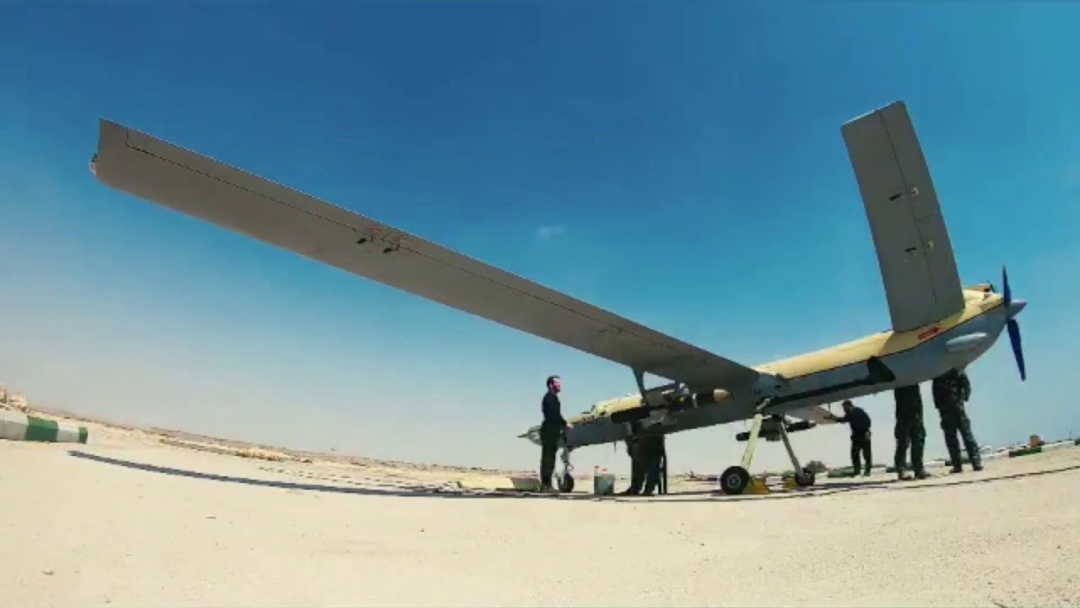
The Iranian factor has become no less significant – and more painful for Ukraine. In August, it became known that the Russian armed forces are mastering Iranian drones. The spokesman for the U.S. State Department officially announced that the Russian military had been training in Iran for several weeks as part of the agreement on the supply of UAVs. To what extent they can strengthen the Russian army remains unclear. But any such UAV supply to Russia could accelerate the mirror supply of more powerful weapons to Ukraine, including aircraft capable of destroying drones with modern air-to-air missiles. Although we cannot ignore the fact that, since the large-scale invasion and until the end of July, Iranian cargo planes made more than 40 flights to Russia – it is possible that they carried plenty of supplies intended for the Russian military.
Turkey also continues to play its dangerous game. In particular, it allows passage through the straits it controls of ships carrying military equipment, which the Russian Federation is trying to collect around the world. These are the August conclusions made by Bloomberg, based on the analysis of Western intelligence data and relevant satellite images. However, the Turkish game is not pro-Russian. Rather, Ankara is trying to extract maximum opportunities from this war to increase own regional influence. Unfortunately, it was Turkey (perhaps together with China) that prevented the West from isolating Russian economy – according to the Bloomberg agency, the export of Turkish goods to Russia in the first half of the year reached its high over the past eight years. This is what President Erdoğan calls the "new economic model." But this is also what really annoys Turkey's Allies in NATO. Among other things, a 58% increase in car trade with Russia was recorded in the first four months of the year. However, when it comes to matters of principle, Turkey does not cross the "red lines." A demonstrative episode was related to Turkish strike drones - during a personal meeting between Erdogan and Putin early August, the latter asked his counterpart to deploy in Russia industrial capacities for the production of drones by Baykar Makina. However, the privately owned company flatly refused. And a few days later, its CEO Haluk Bayraktar assured the public that Baykar intends to build capacities in Ukraine to produce not only a the Bayraktar TB2 attack drones, but also Bayraktar Akıncı and Bayraktar Kizilelma (the latter is a brand new unmanned fighter. This angered Putin so much that his press secretary Dmitry Peskov threatened to destroy such a plant as a legitimate target if it was ever built in Ukraine.
So, even those who support Putin are mainly playing their own game. There was, and perhaps continues to be, an adjustment factor. It will remain in place until the compliance monitoring mechanisms appear. Meanwhile, the analysts with the UK-based Royal United Services Institute think tank studied 27 of the most effective weapons systems that Russia employs in the war against Ukraine. Some strange discoveries were made during research: it turned out that all weapons in question contain microelements of foreign production. The RUSI report noted that at least 450 unique microchips made by companies from the USA, Europe, and East Asia were found in the analyzed systems, including sensors, processors, engines, location and data transmission systems, etc. For example, the accuracy of guidance in the 300-mm Tornado-S anti-aircraft missile is ensured by U.S.-made. Likewise, the X-101 strategic air-to-surface cruise missiles depend on imported microelectronics. In 2017-2022, microchips for Russian weapons were exported from the USA, Japan, Taiwan, Switzerland, the Netherlands, Germany, China, South Korea, Great Britain, and Austria in circumvention of sanctions, the report says. Not surprisingly, on August 13, the United States announced a move to tighten export controls on technologies for advanced semiconductors and gas turbine engines that it sees important to its national security. Currently, U.S. export controls cover a broader range of technologies, including ancillary equipment, software, and technologies used to manufacture semiconductors. U.S. President Biden has repeatedly emphasized that Russia must not retain access to semiconductors for arms production.
Also, if sustainable and powerful control over the transfer of critical technologies is established, Putin can be restrained and technologically exhausted. This requires solutions at the level of a formalized anti-Putin coalition. Its execution can be accelerated if Russia is jointly recognized as a terrorist state or a state sponsor of terrorism.
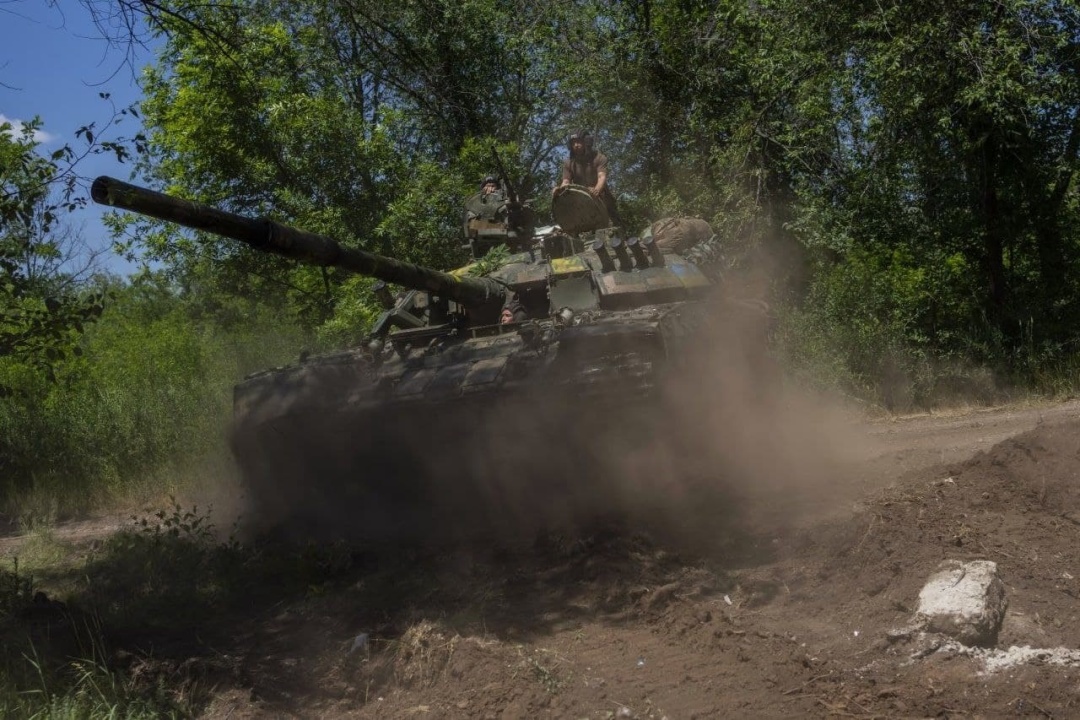
Notes to six months of war
Six months into the bloody war launched by Putin and his clique showed the world a new Ukraine. A country with a cemented national idea – rallying around resistance to external aggression and the creating a developed and well-protected Ukrainian state.
Without exaggeration, the first stage of the large-scale war turned out to be the most surprising one, when tactical means of defeat, multiplied by massive patriotism of Ukraine’s defenders, affected the military strategy of a large aggressive state with superpower ambitions.
The second stage, referred to as the "Battle of Donbas," turned out to be extremely difficult, at the same time proving Ukraine's ability to successfully and effectively run a defensive operation. Its August phase may mark the transition to a new stage – the fight for Ukraine’s south.
As before, Ukraine is critically dependent on the quality and volumes of Western aid – in terms of weapons and resources. However, with each new assistance package, the Army proves it can use the supplies as efficiently as possible not only to deter Russian aggression, but also to protect the well-being of Europe.
Providing Ukraine with modern, high-tech weapons can be a guarantee of not only exhausting Russia and stripping the Kremlin of its aggressive ambitions, but also getting rid of the criminal regime in Moscow as such. In fact, this August, Ukraine vividly proved that it is capable of driving the situation toward to pretty much any scenario of ending the war. This may be the return to the pre-invasion borders as of February 23, 2022, with a subsequent transition to the process of talks on the liberation of Crimea and the previously occupied territories of Donbas. It can also be about complete liberation of all of Ukrainian territories from Russian invaders. Finally, it can be about creating conditions for Russia’s capitulation with the elimination of Putin's criminal regime and a change in the country’s political system, under certain conditions, including its nuclear disarmament. Of course, the freezing of the war in line with the Korean scenario is also possible – that’s in case the West halts its lethal aid to Ukraine.
But any of those scenarios can be implemented only in partnership with a group of states that will form an anti-Putin coalition – to ensure uninterrupted and comprehensive assistance to Ukraine, strengthen Russia sanctions, and create a powerful global filter to prevent modern technologies and high-tech components from finding their way into Russia. Only the joint, conscious actions of multiple actors can avert a planetary-level catastrophe.
Also, the hot phase of this war could either be completed by the end of 2022 or extended for several years - it depends not only on Ukraine or better say not so much on Ukraine...
Volodymyr Horbulin, First Vice-President of the National Academy of Sciences of Ukraine, Chairman of the Supervisory Board at the Ukrainian Institute for Security Studies, academician
Valentyn Badrak, Director of the Army, Conversion and Disarmament Research Center

